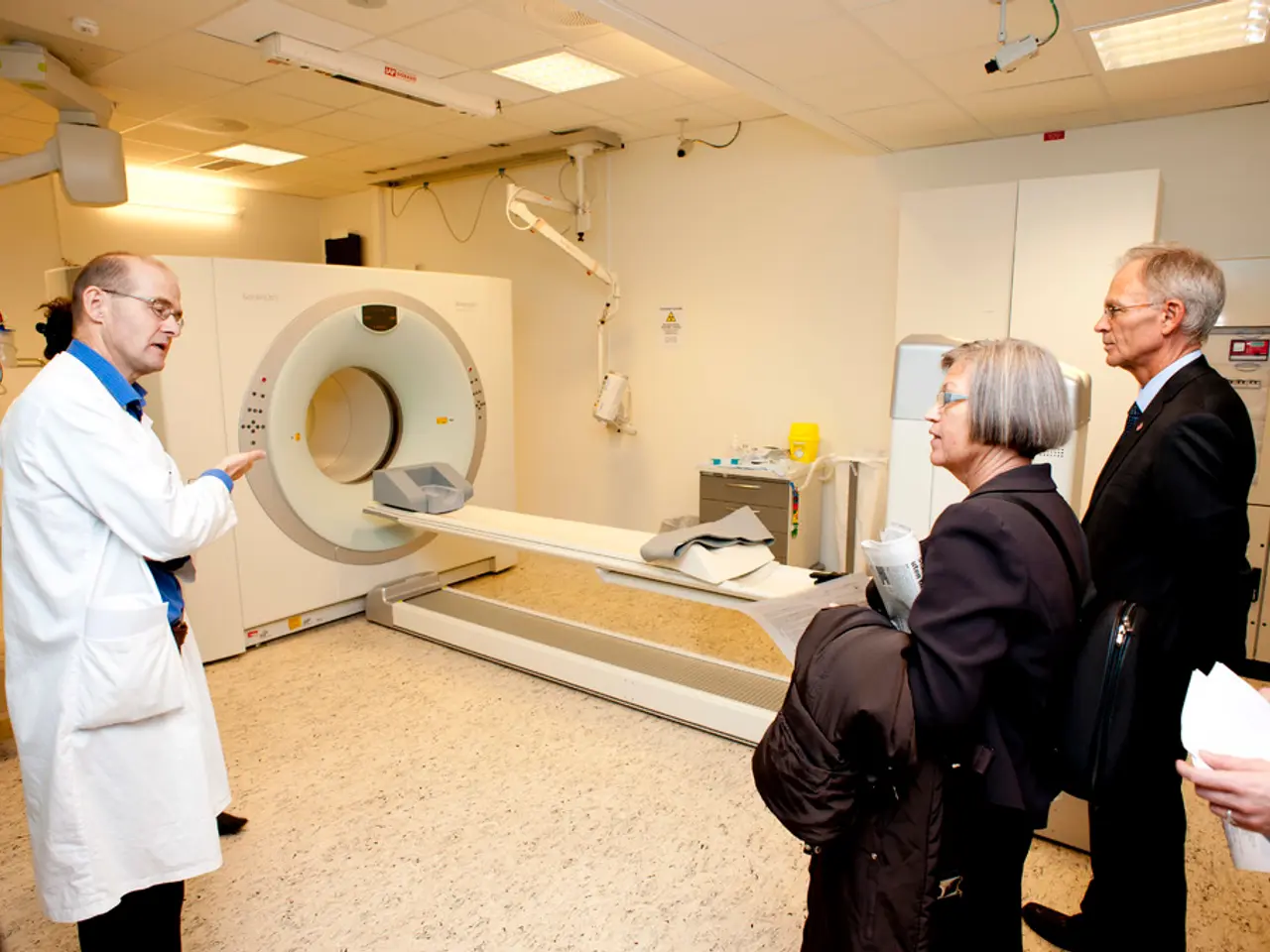Utilization of PET Scans in Chemotherapy Treatment
In the realm of cancer treatment, Positron Emission Tomography (PET) scans play a crucial role in determining the progression of the disease and the effectiveness of chemotherapy. Here's a breakdown of what you can expect when undergoing a PET scan during chemotherapy.
PET scans work by detecting radiation emitted by a radiotracer, a substance containing small amounts of radioactive substances attached to natural chemicals. The procedure is typically performed a number of weeks after the end of chemotherapy treatment, as scan readings may not accurately show how well the treatment is working until a few weeks after the end of the treatment.
People who receive the radiotracer intravenously may feel a pin prick at the injection site and a cold sensation moving up the arm during the injection. It's essential to wait for about 1 hour after administration of the radiotracer since it takes time to spread throughout the body.
Most people can resume their daily activities after the procedure, but some may need special instructions from their doctors. For instance, people should avoid strenuous physical activity 24 hours before the scan, avoid eating or drinking anything other than water 6 hours before the scan, remove metal objects, and remove removable dental work and hearing aids.
PET scans are used in various stages of cancer treatment. Before chemotherapy, they help detect the location and stage of cancer to determine the best chemotherapy option and dose. After chemotherapy, they help determine the effectiveness of the treatment, check for signs of cancer left following the treatment, and identify possible recurrence of cancer.
In some cases, like head and neck squamous cell carcinoma, a second-look PET scan may be done if there is a delay exceeding four weeks from the initial scan or treatment, helping to detect new lesions and potentially alter treatment plans.
The common clinical practice for PET scanning after chemotherapy involves an early interim scan after the initial cycles to monitor treatment response, followed by a post-chemotherapy scan several weeks to months later to guide subsequent treatment decisions. However, no rigid universal timing exists, and the frequency of PET scans during chemotherapy may vary depending on the type of cancer and its severity.
People should discuss any possible risks with their doctors before undergoing the procedure, and doctors may advise them to avoid close contact with pregnant people, infants, and young children just after the procedure. People nursing a baby should get their doctor's advice on how to proceed.
PET scans are usually performed on an outpatient basis, and administration of the radiotracer takes place by injecting it into a vein, drinking a solution, or inhalation. During the scan, people need to relax and avoid moving or talking.
The amount of radiation exposure in PET scans is low, and the benefits of the procedure usually outweigh the radiation risk. People undergoing PET scans should inform their doctors about medications, allergies, and medical conditions.
In summary, PET scans are a vital tool in cancer treatment, providing valuable insights into the progression of the disease and the effectiveness of chemotherapy. If you're undergoing chemotherapy, it's essential to discuss with your doctor the timing and frequency of PET scans to ensure you're receiving the best possible care.
Chemotherapy treatments are often supplemented with PET scans, which are essential for determining the progression of cancer and the effectiveness of the therapy. In oncology, PET scans work by detecting radiation emitted by a radiotracer, a substance containing small amounts of radioactive substances attached to natural chemicals.
After the end of chemotherapy treatment, PET scans may be performed a number of weeks later to accurately assess the treatment's impact. Before chemotherapy, PET scans help detect the location and stage of cancer, guiding the selection of the most appropriate chemotherapy treatment and dose.
After chemotherapy, PET scans can help identify possible recurrence of cancer, check for signs of cancer left following the treatment, and potentially alter treatment plans if necessary. In some cases, like head and neck squamous cell carcinoma, a second-look PET scan may be conducted if there is a delay exceeding four weeks from the initial scan or treatment.
People should discussthe risks associated with PET scans, such as radiation exposure, with their doctors. Prior to the procedure, pregnant people, infants, and young children should be avoided due to possible radiation exposure risks.
In the realm of health-and-wellness and medical-conditions, science has developed various therapies-and-treatments to combat cancer, and PET scans play a pivotal role in this fight, providing valuable insights into the progression of the disease and the effectiveness of chemotherapy.




